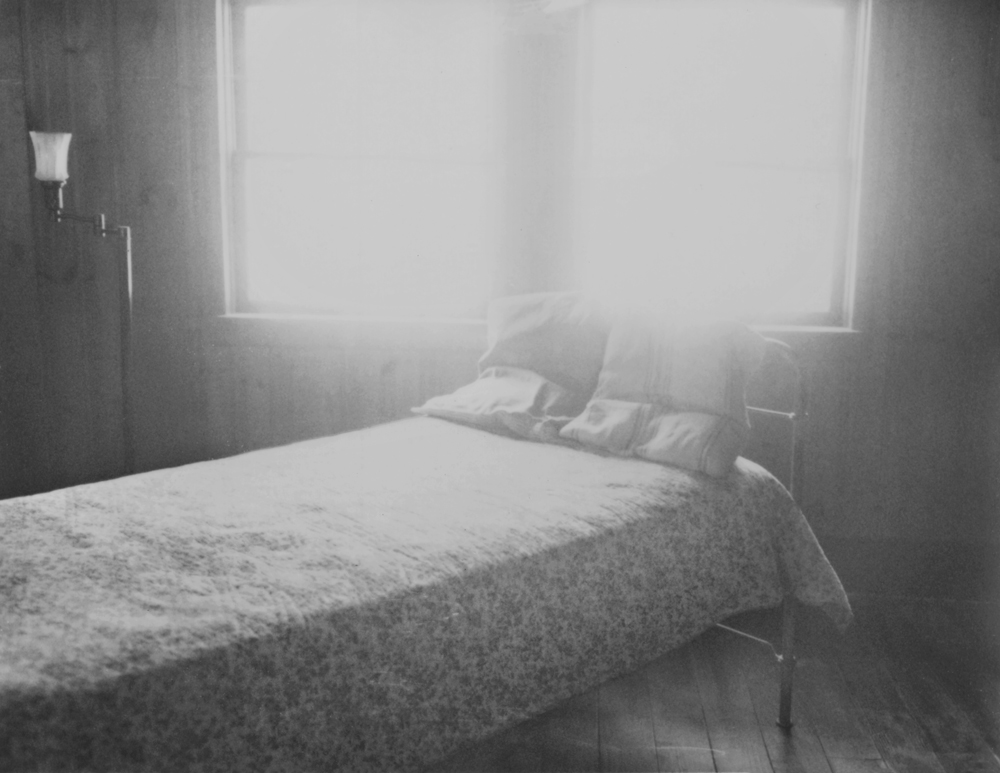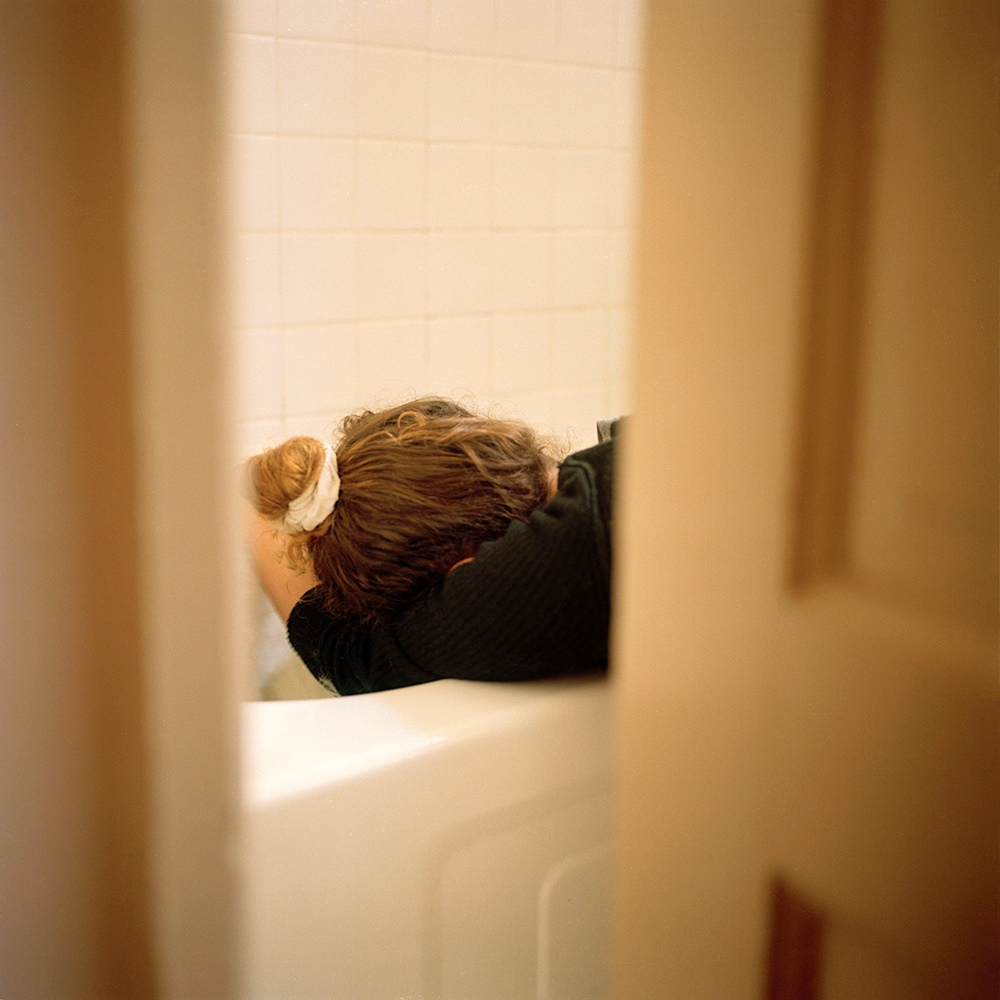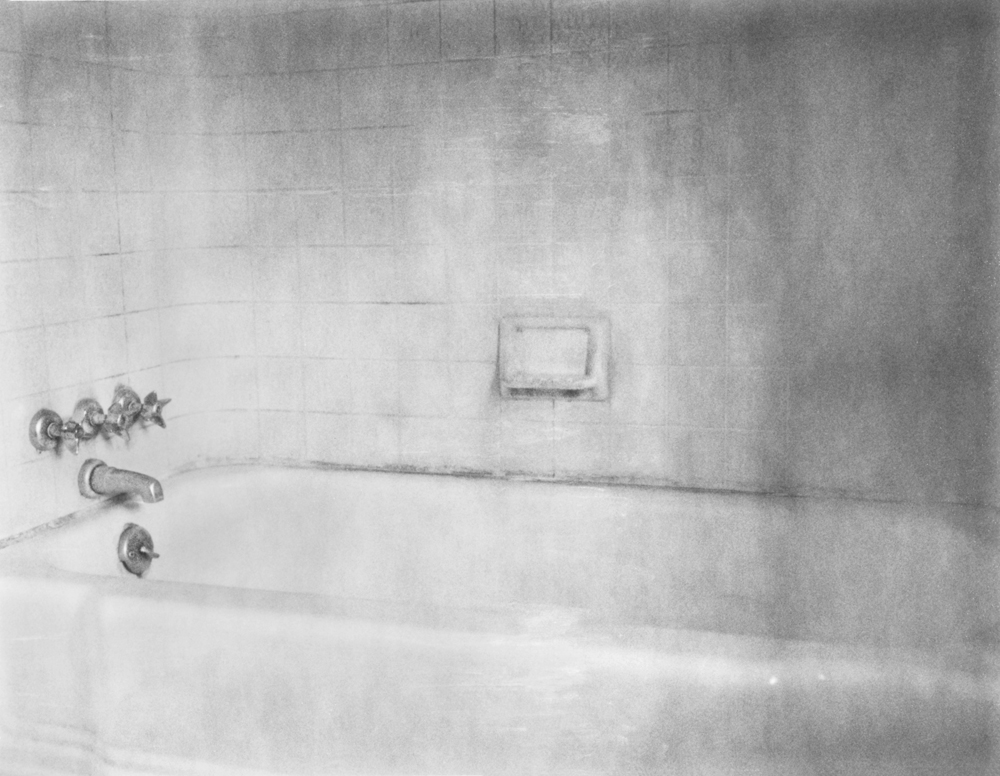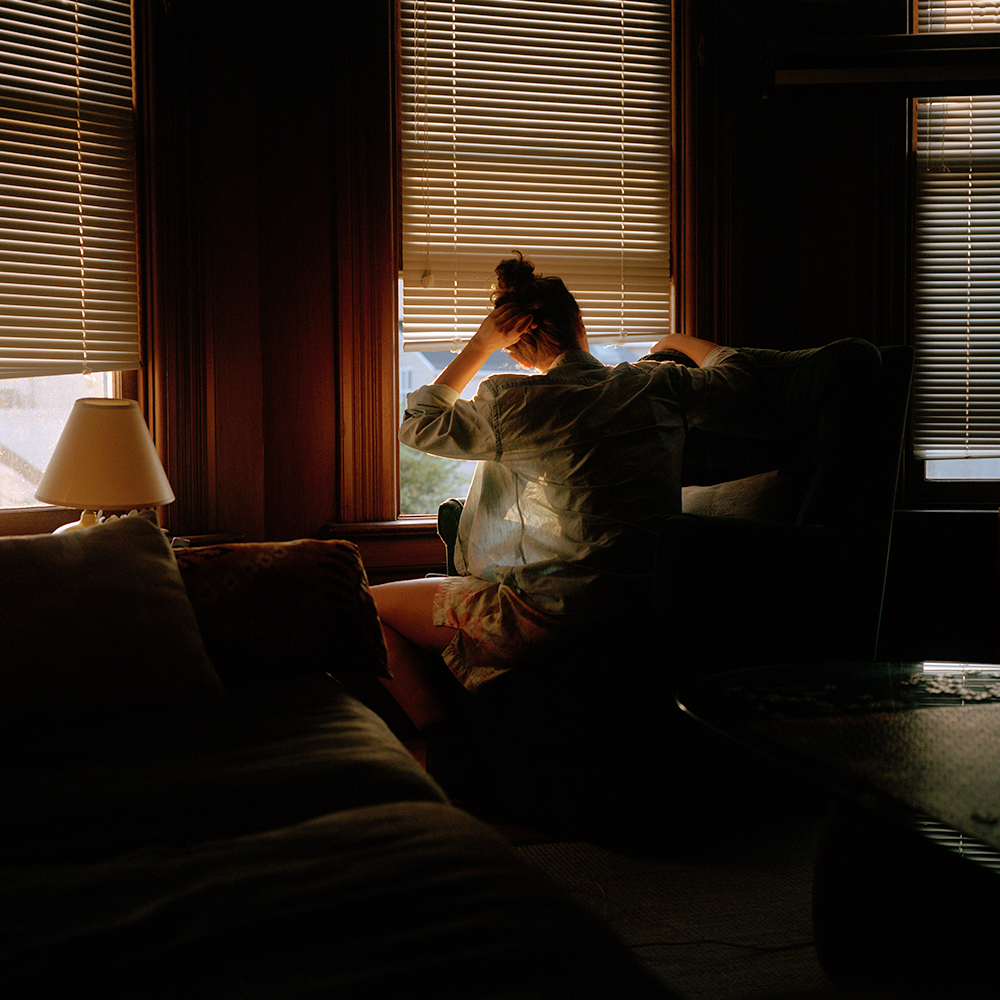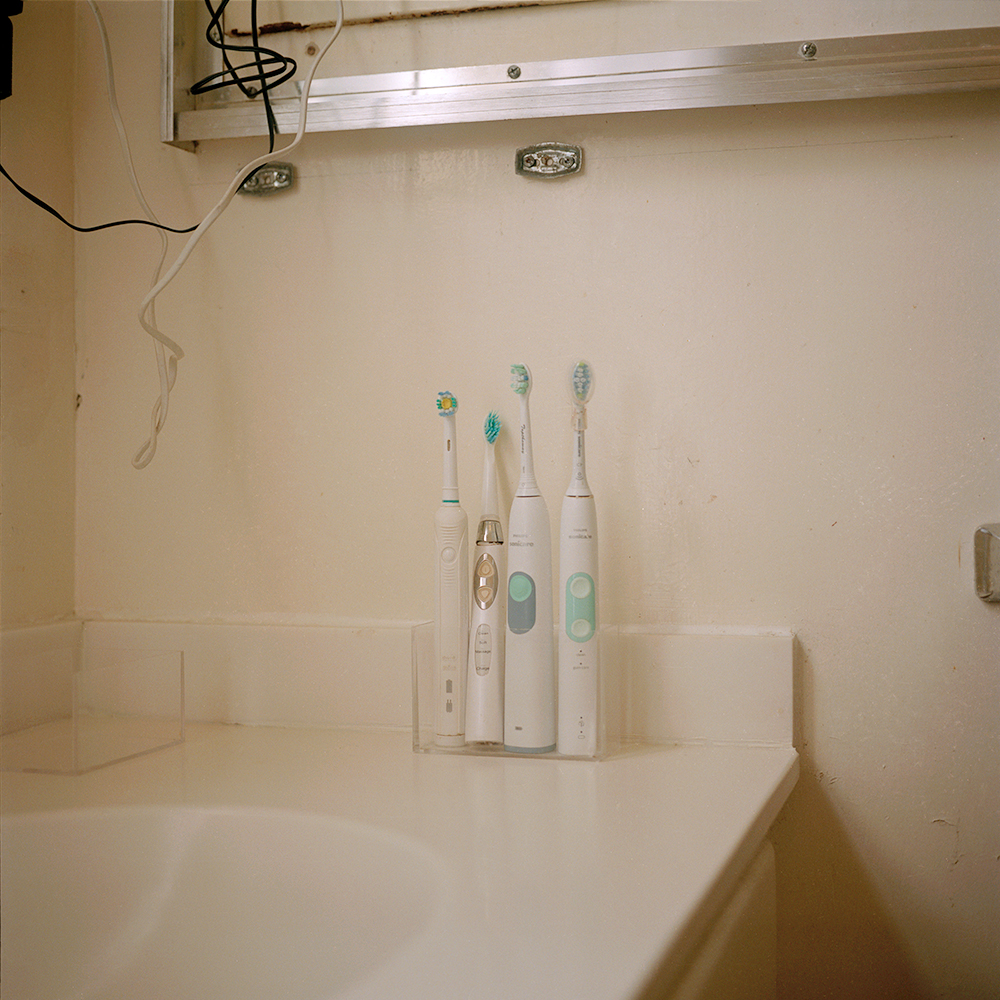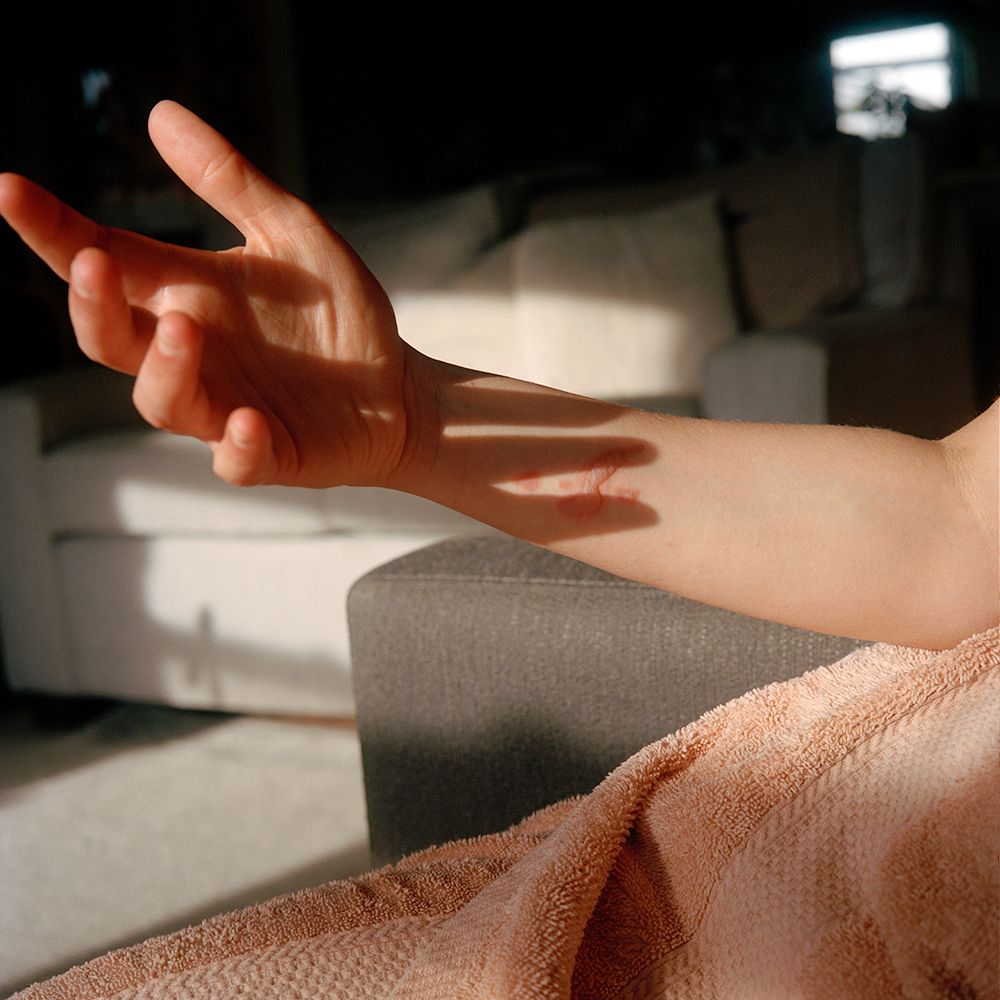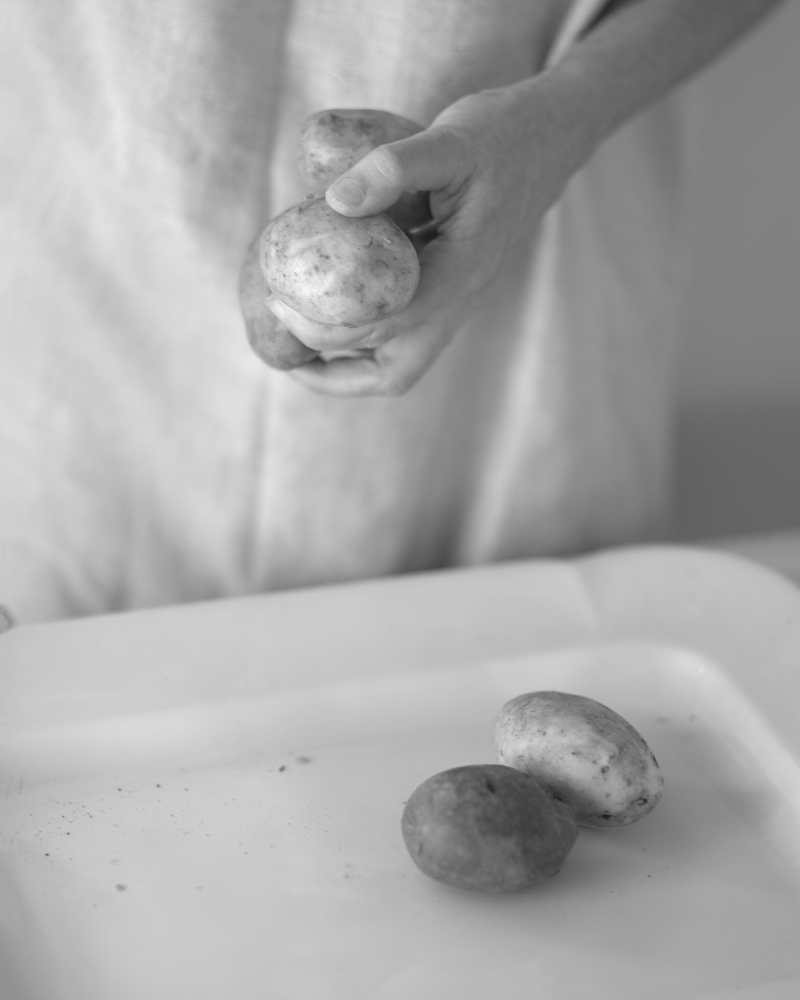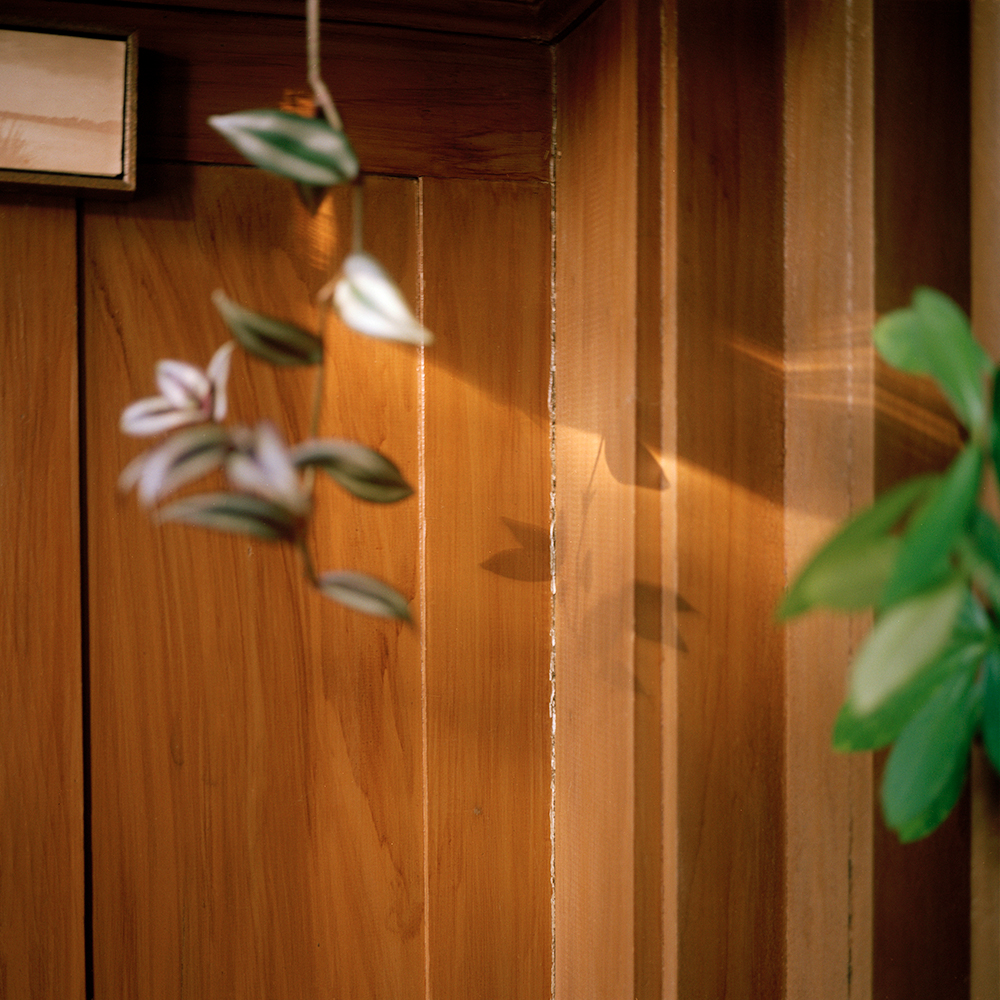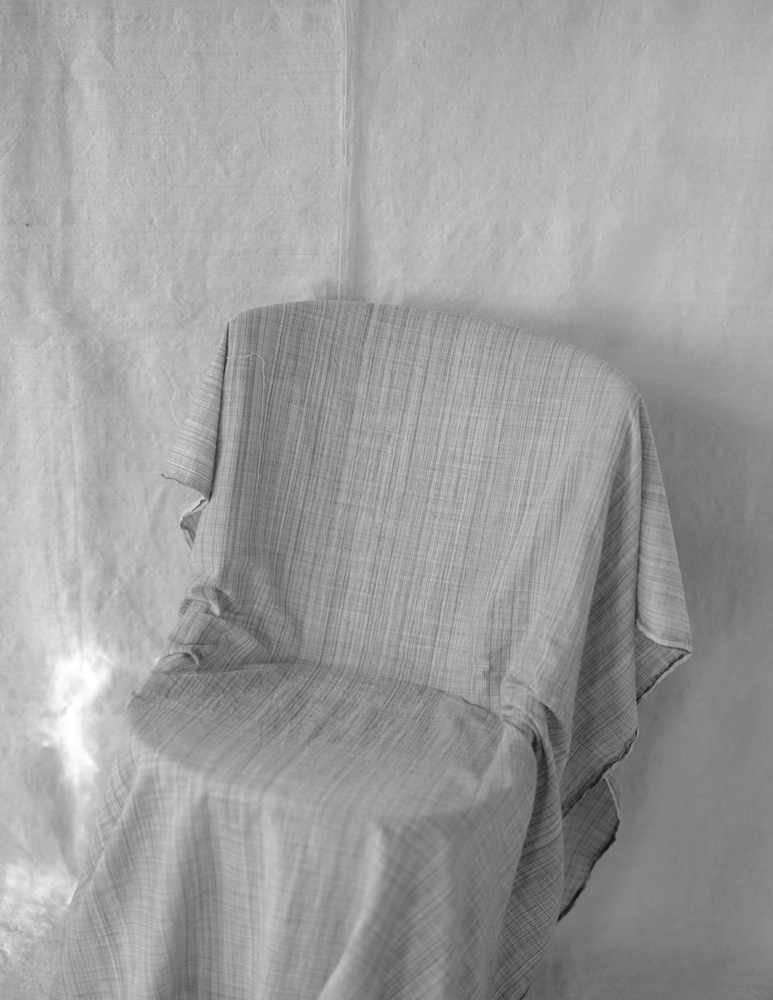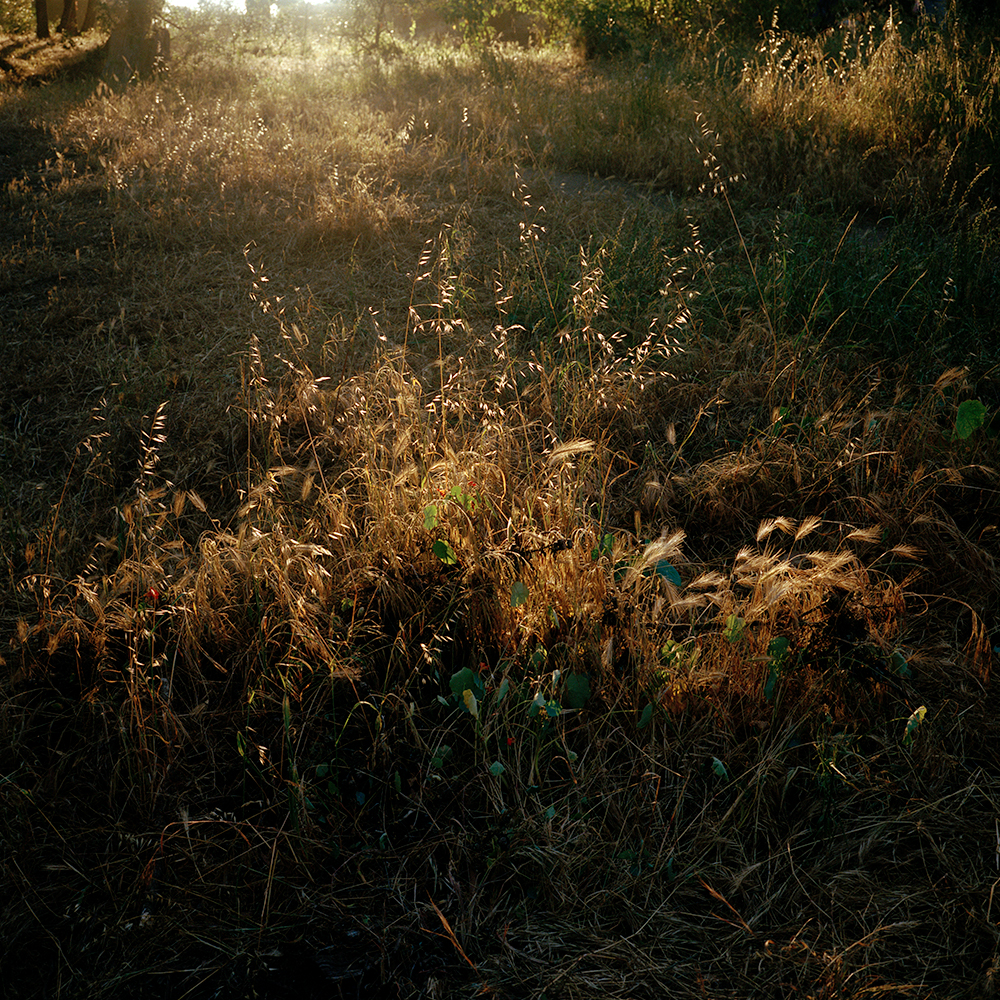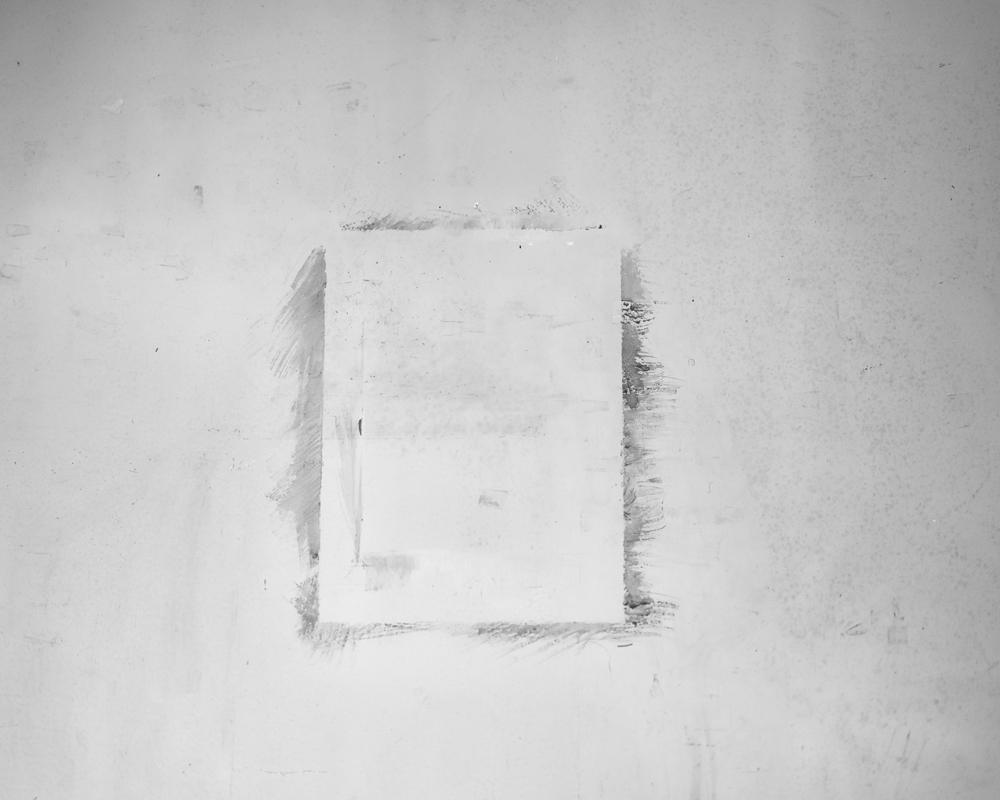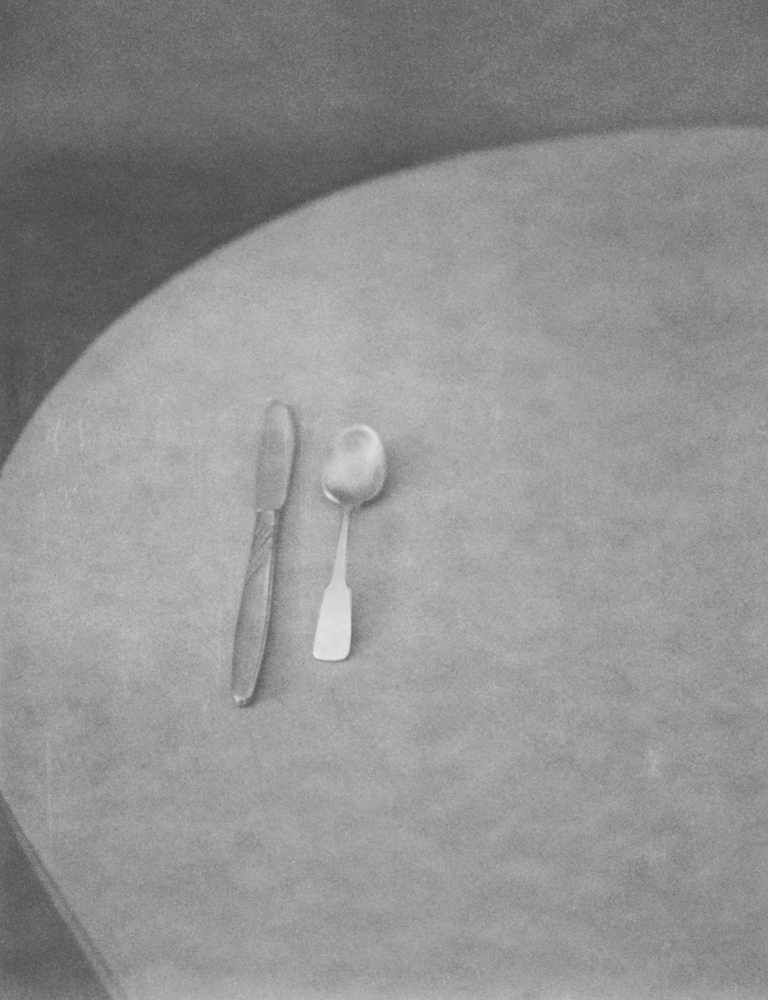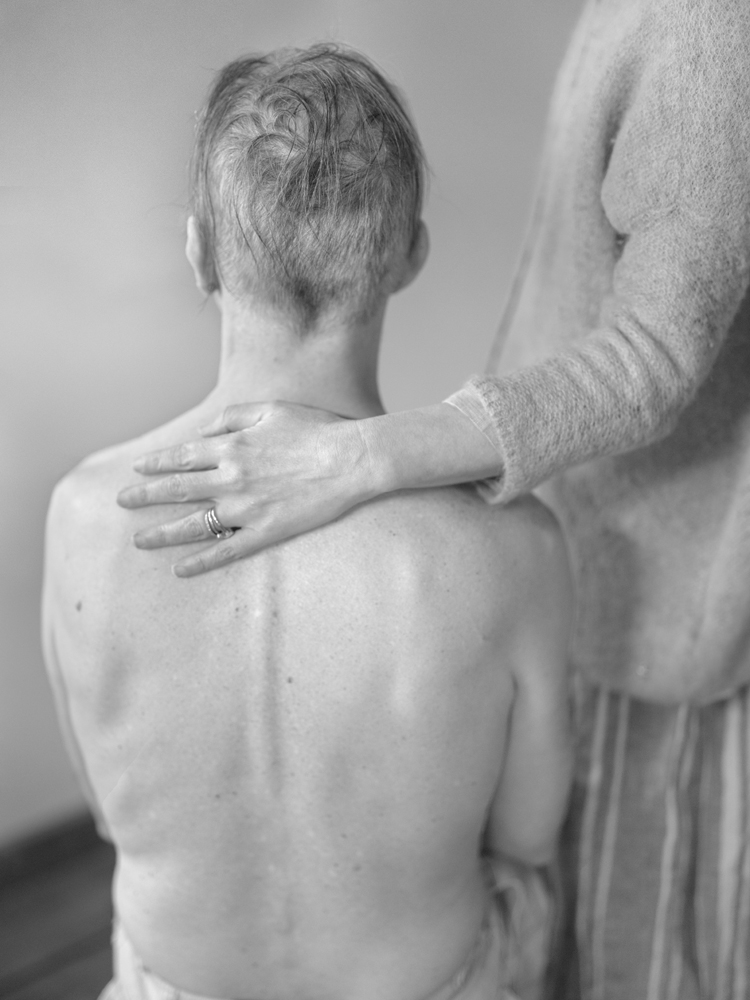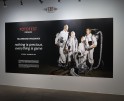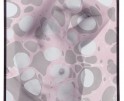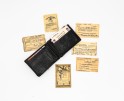Penumbra Foundation / Image Threads LTP: Again and Again: Ruth Lauer-Manenti and Evan Davis in Conversation
Photographers Evan Davis and Ruth Lauer-Manenti met on Zoom in January of 2020. Both were participants in the inaugural year of the LTP. As that year of the course unfolded, so did the first year of the pandemic. Evan and Ruth found solace and strength by making work in their physical space, around the idea of home. Again and again.
Evan Davis: Howdy Ruth, it’s a pleasure to sit down and have a conversation with you.
We’ve been friends for a few years now, and we have in common that we have been the only students to participate in the LTP for more than one year. We also share an interest in creating photographs at home. Do you think you could describe why you’re interested in photographing home, or is it something that just happens?
Ruth Lauer-Manenti: We live in a beautiful home and I never lived in a beautiful home before. My parents were refugees, so they didn’t have this sense of home. Home was Berlin and Vienna, cities they had to escape from. Years later the Austrian government offered my father his father’s house back, or money, as a way of apologizing for murdering his relatives. He wanted to take the house and even fantasized about moving back, but my mother insisted he take the money. So, we never grew up with a sense that this house had belonged to our grandparents or that it was in the family or that it was something that we would inherit. There was no attachment to a particular place and the houses we lived in were a bit generic and nothing special.
I’m now 20 years in this house. It was built in 1940. It’s all wood with a front door where if desired one can open the top half only; a Dutch door. There’s a fireplace and a stone mantel and different kinds of windows that open every which way with old glass so that the light comes in in ripples. It’s at the end of a dead-end road and across from the house is a pond. At the time we bought the house no one else wanted it, for reasons I can’t fathom, but perhaps because it’s small and the driveway isn’t paved. I’ve been photographing the house now for a good number of years, and I still can’t wait to go home and photograph the house.
ED: What brings you back, what gets you excited about returning to photograph at home?
RLM: It’s a poetic pause; a way of connecting to routines that brings gratitude. Doing things over and over again is such a big part of our lives. How many times I open or close a door etc. I feel that quality in your work too; the showing of your couch, lamp, plant, toothbrush, coffee cup, Naomi and or the view from the window, inside looking out, a way of accepting what one has on a day to day, what’s in reach and giving it meaning and visibility. Everything is impermanent, fleeting, and thereby precious.
ED: That observation means a lot to me, Ruth, indeed, I find myself taking pictures of the same things over and over. I never grow tired of photographing my bed, at home or while traveling, messy after a night’s sleep.
What is it that draws you to photograph the same subjects again and again?
RLM: I think it relates to the again and againness of life. I was thinking today, if or when I make bread, in an illuminated way the bread is already eaten, digested, and in the compost. I mean I know that, as I make the bread. It is the arrangement of cycles from morning to morning, again and again getting up, later making the bed, and again and again in the evening having another glass of wine, and at night going back to bed. Some cycles are so minute and done so often they might be unseen or thought of as insignificant, like opening a door or pulling the chair out from under the table, but I would like to make work where those kinds of everyday motions are seen. If I sweep my floor, at some point someone will come and drop a crumb and so on and so forth and dust will accumulate and then I’ll have to sweep again. The clean floor is impermanent. From the moment it’s clean it starts collecting dust again. In the act of taking care of my home, witnessing the light ripple through the living room across the daybed or catching the reflection of the window in the bathroom mirror, I feel my best as an artist.
ED: Do you find it hard to be an artist?
RLM: I find it hard to be an artist.
ED: Yes, it’s very hard. It’s a lot of heartbreak.
RLM: Yes I mean the more you put into it, the greater the heartache. On the other hand, I know happiness for me doesn’t come from not working. Nonetheless, the private hardship and solitude I often feel makes community crucial. I’ve made friends through LTP that I live close enough to meet with, even though in the class our meetings were online. I made friends with people who live far away, and we continue to meet on a regular basis.
ED: Oh I couldn’t agree more, I think one of the most amazing things that LTP offers is the community it creates between photographers based all over the world.
RLM: Oh definitely. One of my closest friends is Atefe Moeni whom I met in the course, and she lives in Teheran. Her thoughts and presence added a lot to our course. We were all on different time zones. Having these friends helps me tremendously to navigate through some of the rejection and vulnerability that comes with the work. I feel as if I can always reach out to the photography friends that I’ve made through the course for guidance and inspiration. I can’t imagine my life now without them.
ED: The picture of you sweeping flour off the kitchen counter is so much about being an artist in my mind. That’s what I see when I look at it.
RLM: That’s a wonderful reading of my work. Thank you, I love that.
ED: Sweeping is a reoccurring theme in your work. What’s with all the sweeping?
RLM: I used to smoke and when I quit years ago every time I felt like smoking I ended up sweeping and now I love to sweep, especially when I’m on edge or nervous. It’s something I can control; removing the dust in recognition of impermanence in that dust will come again. It’s something I feel certain about in
the midst of the uncertainty that our lives are based on. The fact that we don’t know what’s going to happen in 10 minutes from now… And, sweeping is not expensive, or out of reach as an activity. Years ago, I was staying in a monastery in India and there was this young monk who came to sweep the floor. I didn’t think it was appropriate for a monk to sweep my floor and I told him that. He answered humbly with, “you have so many important things to do, I will sweep your floor.” I persisted with “no, no,” and eventually he started reciting verses in Sanskrit, from an old scripture, the Srimad Bhagavatam. He told me that the verses speak of the dregs that cover over our heart, layers of armor, and that by sweeping the dust off the floor with the intention of removing these dregs, the coverings become thinner. It’s a prayer such that as I sweep this floor, may the dirt that’s covering my heart be removed. So there was this young monk, begging to sweep my floor, and he’s singing to me, and in the end, of course, I let him sweep the floor. I went outside onto the balcony while he swept and afterwards there was evidence that he had removed the dirt off of his heart, and that evidence was in my floor. So I really do like cleaning. It’s not about domesticity. It’s more primal. I’m old school, I can really relate to that idea of a kind of internal well-being that is hard to access in the stress of life and yet easy to access, wiping the kitchen counter or sweeping the floor. It works for me.
ED: That’s a really beautiful story.
I’ve heard you describe meditation as “to observe things as they pass.” Is that how you put it?
RLM: Yes, to observe without judging, or clinging, just paying attention.
ED: Do you think that your meditation practice at all extends and plays a part in your photographic work?
RLM: Well… in meditation the general idea in whatever form one practices, and there are many different forms, is to watch the sounds, thoughts and sensations pass. For example a thought comes into your mind and if you don’t grab onto it and start thinking about it, it will pass and then a new one will come and then again that will pass and a new one will come or a sound or sensation etc. The practice is to just observe without reacting or acting upon the things themselves that are passing. There’s a freedom felt when one doesn’t get entangled into all the things that are passing and simply sits back and lets them pass. Also, through the practice of watching all that can pass, one feels or glimpses a stillness which doesn’t seem to be passing. The experience helps diminish the general state of anxiety and inadequateness that I might otherwise find crippling. It gives me courage to take the pictures that I want to take.
ED: In what ways do you think the structure of the Long Term Program helped you in the advancement of your work?
RLM: Along with regular one on ones with Jenia she invited monthly visiting artists, curators, writers, publishers to give a presentation and then a book assignment in relation to the presentation that they gave. I benefited from the deadlines of these assignments and in that time there was often a jump where surprising elements happened. Mike Slack came and gave us the task to make a book where every decision needed in making a photobook- it’s size, number of pictures, number of pages, whether there is text, whether the pictures are black and white or color or both, full bleed or not, double spreads or not, same size every picture or not….. was made by the throw of the dice. If you threw two dice and got number 4 that meant something different than if you got number 8 and so on and so forth. Every time I threw the dice, I was frustrated by what the numbers designated. I thought about cheating or not even following the rules of the game but then I thought it over and, in the end, following the “rules” proved to be a wonderful and important way of working. The book I made, Alms, was later accepted for a juried show at the Griffin Museum. It was a way of working that got me out of my habituated ways of thinking and making things. I should revisit that exercise again.
ED: What was a gift that LTP gave you that you still take with you to this day?
RLM: The course gave me a clarity of knowing what I wanted to do and then the confidence to see it through. One day I had a strong feeling that I wanted to take a picture of a knife and spoon, objects I handle repetitively, day after day, week after week, year after year. But on my way to the kitchen, the strife in the world came in my mind and I questioned the value or excitement in making such a picture. After which I thought, and even said to myself, “God damn it Ruth – just make the picture that you want to make!” I did and I continue to love that picture. LTP, Jenia’s belief in me and the spirit of community helped me to stop canceling out my ideas, that’s the gift.
ED: That’s a good reminder for us all, I think: trust your instincts and don’t pre-edit before you’ve actually made anything yet. I could certainly stand to follow that advice more often! It’s been great chatting with you Ruth, talk soon!
RLM: I haven’t had such a good time in a while, this has been such a pleasure, let’s talk tomorrow. Once again, huge thanks to Jenia, LTP, Image Threads and Penumbra and to Sara J. Winston and Lenscratch for putting this together.
Evan Davis is a photographer and photobook maker based in Los Angeles. He has self-published a handful of books and is currently the Program Coordinator of the Long Term Program at Penumbra Foundation. A student of the inaugural class, in 2020, he has been working for LTP since 2021.
Previously, during a decade spent living in the Bay Area, Evan founded Group Study (part community-building project, part publishing-identity, and critique group that met regularly between 2015-2020) and volunteered as a mentor at First Exposures (2013-2017). He holds a bachelor’s degree from UC Davis in Technocultural Studies. His book, It Was Absolutely Worth It, debuted at Zona Maco in Mexico City in 2022.
Follow Evan on Instagram @evdogdavis
Ruth Lauer-Manenti is a first generation American whose parents arrived from Europe as refugees during World War II. Ruth’s background is in drawing and painting. She received an MFA from The Yale School of Art in 1995. In 2012, she was given a large format camera and taught herself how to use it in a way that utilized her skills as a painter. Her mother was also an artist who left behind a legacy of unknown work. Part of Ruth’s ambitions as an artist is to reward her mother for her efforts and create a continuum. Ruth was awarded a NYFA grant in photography in 2016 and her book Remnants was included in an exhibition at The Griffin Museum of Photography. She had a solo exhibition at The Center for Photography at Woodstock in NY in 2020. Ruth is currently working towards an MFA in photography at Hartford University where she received a merit scholarship towards her studies. Her father found beauty in a hole in his shirt; in the way that it spoke of impermanence and fragility. Her mother was grateful that there was a tree she could admire from the kitchen window while washing dishes. Her parents endured a lot of suffering yet lived with poetic sensibilities that Ruth has inherited from them. Since breaking her neck in a car crash at the age of twenty, she developed a spiritual life and practice that is integrated into her photographic work. She lives in the Catskill Mountains, NY with her husband, a nurse and tai chi practitioner and their 3 cats.
Follow Ruth on Instagram @lauermanenti
LTP Photobook Program is a year-long online course which combines seminars, critiques with guest artists, and one-on-one sessions. Working with several instructors throughout the program, while also receiving assignments and feedback from guest critics, participants will have both continuity and variety of support. The learning process is based on regular production of physical maquettes, which helps participants deepen their understanding of the book form and allow them to continue redefining it for themselves. Reading and writing assignments, as well as individualized exercises throughout the year will develop the skills and knowledge necessary for a photobook maker. While the objective of the course is to have, at the end of the year, an artist book or a physical maquette to present to publishers or to self-publish, participants also establish a practice and a community to support them going forward. The course is presented in collaboration with the Penumbra Foundation in New York City, and Image Threads Collective.
Applications for the 2024 session of the Penumbra Foundation / Image Threads LTP are open until October 6th, 2023. It is free to apply. Learn more and apply here.
Follow LTP on Instagram @photobookprogram
Penumbra Foundation is a non profit organization that brings together the Art and Science of Photography through education, research, outreach, public and residency programs. Its goal is to be a comprehensive resource for photographers at any level, artists, students, professionals, historians, researchers, conservators and curators.
Follow the Penumbra Foundation on Instagram @penumbrafoundation
Image Threads Collective brings together artists, teachers, and bookmakers who are passionate about photographic projects and books, for the mutual exchange of ideas and critical feedback. They partner with students and working artists to produce collaborative workshops, public exhibitions, and long-term mentoring relationships. They are committed to working with and for the communities who host their programming.
Follow Image Threads Collective on Instagram @imagethreads
Posts on Lenscratch may not be reproduced without the permission of the Lenscratch staff and the photographer.
Recommended
-
Hillerbrand+Magsamen: nothing is precious, everything is gameOctober 12th, 2025
-
BEYOND THE PHOTOGRAPH: Q&A WITH PHOTO EDITOR JESSIE WENDER, THE NEW YORK TIMESAugust 22nd, 2025
-
Christa Blackwood: My History of MenJuly 6th, 2025
-
BEYOND THE PHOTOGRAPH: Researching Long-Term Projects with Sandy Sugawara and Catiana García-KilroyMarch 27th, 2025
-
Dodeca Meters: Arielle Rebek, Kareem Michael Worrell, and Lindsay BuchmanFebruary 7th, 2025

